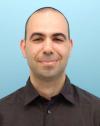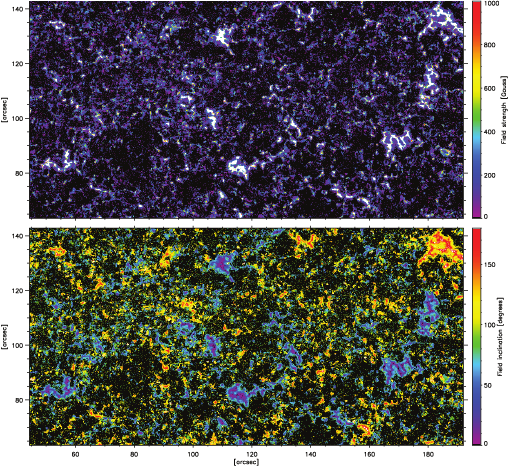
Central mission of my career
Quintero Noda, Carlos (ISAS/JAXA研究員)
「ひのでプロジェクト」に参加したのはいつですか?そのきっかけは?
I joined the Hinode project in 2015 when I came to Japan. The reason is that I used Hinode data during my PhD. In that sense, I think that Hinode data are excellent and allow to study the Sun in new ways that were not available before.
「ひので」プロジェクトに参加したのは2015 年に日本に来てからです。日本に来る前も、新しい手段で太陽を研究できる素晴らしい「ひので」のデータを使って学位研究を行ないました。
「ひのでプロジェクト」の10 年間でいち押しの成果や画像は?
Hinode was launched in a solar minimum period what means that the magnetic activity on the solar surface was scarce. This condition motivated solar researchers to put their efforts in new areas barely explored before, i.e. the quiet Sun magnetism. This allowed us to discover that the magnetic field is distributed as vertical (respect to the solar surface) strong concentrations surrounded by low strength fields perpendicular to the previous ones. This result supposed a change in the way we understand the lower solar atmosphere.
「ひので」は太陽活動の極小期に打ち上げられました。つまり、太陽表面の磁気活動は弱い時期でした。そのため、以前は研究が難しかった静穏な太陽磁気活動の研究が精力的に行われました。これにより、表面に垂直で強い磁場とその周りに弱く水平な磁場が分布していることがわかりました。この結果は、私たちが低層大気の性質を理解する上で変化をもたらしました。

「ひのでプロジェクト」の 10年間で一番印象に残っている出来事や苦労したことは?
I joined the team almost eight years after the launch, so I was not there for the first and exciting years. Still, I have lived several memorable moments. One of them was the Hinode 10 solar meeting. I saw there senior researchers that were working on this project several years before the launch, and they are still working on it ten years after. But the most important, those people were surrounded by young researchers that are starting their master or PhD courses, aiming to use data from the same mission, after ten years of its launch !
私が「ひので」プロジェクトに参加したのは打ち上げから 8 年後なので、面白い成果が次々に出た初めの時期にはいませんでした。それでも、印象的なことがいくつかあります。ひとつは、ひので-10 国際会議です。打ち上げの前からプロジェクトで働いてきた研究者が、10年後の今でも現役でいることです。もっと重要なことは、そのような研究者は修士・博士研究を始めている若手研究者に囲まれており、打ち上げから 10 年経過した同じ人工衛星で得られたデータを解析していることです。
「ひので」で今後取り組みたいことや期待することは?
I would like to keep using the special properties of Hinode to understand the solar magnetic field but combining them with new solar missions as the IRIS satellite or ground-based telescopes. My aim is to analyze observations of multiple spectral lines trying to understand the different phenomena that take place in the solar atmosphere.
「ひので」のユニークな性能を活かして、さらに IRIS 衛星や地上望遠鏡の新しい装置と組み合わせて、太陽磁場の研究を継続していきたいです。多数のスペクトル線の観測を解析することで、太陽大気で発生する様々な現象を研究することが目的です。
当ページの画像、映像のご利用については、こちらをご覧ください。当ページの画像、映像でクレジットが明記されていないもののクレジットは『国立天文台/JAXA』です。当ページ内の、クレジットが『国立天文台/JAXA』、『国立天文台/JAXA/MSU』および『国立天文台、JAXA、NASA/MSFC』である著作物については、国立天文台が単独で著作権を有する著作物の利用条件と同様とします。著作物のご利用にあたっては、クレジットの記載をお願いいたします。なお、報道機関、出版物におけるご利用の場合には、ご利用になった旨を事後でも結構ですのでご連絡いただけますと幸いです。ご連絡はsolar_helpdesk(at)ml.nao.ac.jp((at)は@に置き換えてください)にお願いいたします。
